

The Ljubljana Power Station is a coal-fired heat and power station in the Moste District of Ljubljana, the capital of Slovenia.


The Ljubljana Power Station is a coal-fired heat and power station in the Moste District of Ljubljana, the capital of Slovenia.
The plant is owned and operated by Energetika Ljubljana.
The plant delivers 90% of the remote generated heat in Ljubljana.[ citation needed ] About 74% of Ljubljana households use district heating. [1]
The power station consists of three units, which went in service in 1966, 1967, and 1984, and generate 42 MW, 32 MW, and 50 MW of electric power (94 MW, 94 MW, and 152 MW of heat, respectively). The 101 metre tall chimney at 46°3′28.9″N14°32′40.9″E / 46.058028°N 14.544694°E has a gallery that resembles an observation deck. However, it contains equipment for exhaust monitoring.
The Ljubljana Power Station uses coal procured from Indonesia and 15% biomass, about 100,000 tons of woodchips per year. [1] In the past, coal was supplied from Slovenian Central Sava Valley coal mines; however, Indonesian coal is cheaper and contains less sulfur.

A power station, also referred to as a power plant and sometimes generating station or generating plant, is an industrial facility for the generation of electric power. Power stations are generally connected to an electrical grid.

Solar thermal energy (STE) is a form of energy and a technology for harnessing solar energy to generate thermal energy for use in industry, and in the residential and commercial sectors.

Cogeneration or combined heat and power (CHP) is the use of a heat engine or power station to generate electricity and useful heat at the same time.

A fossil fuel power station is a thermal power station which burns a fossil fuel, such as coal or natural gas, to produce electricity. Fossil fuel power stations have machinery to convert the heat energy of combustion into mechanical energy, which then operates an electrical generator. The prime mover may be a steam turbine, a gas turbine or, in small plants, a reciprocating gas engine. All plants use the energy extracted from the expansion of a hot gas, either steam or combustion gases. Although different energy conversion methods exist, all thermal power station conversion methods have their efficiency limited by the Carnot efficiency and therefore produce waste heat.

District heating is a system for distributing heat generated in a centralized location through a system of insulated pipes for residential and commercial heating requirements such as space heating and water heating. The heat is often obtained from a cogeneration plant burning fossil fuels or biomass, but heat-only boiler stations, geothermal heating, heat pumps and central solar heating are also used, as well as heat waste from factories and nuclear power electricity generation. District heating plants can provide higher efficiencies and better pollution control than localized boilers. According to some research, district heating with combined heat and power (CHPDH) is the cheapest method of cutting carbon emissions, and has one of the lowest carbon footprints of all fossil generation plants.

Westerholt Power Station was a coal fired power station in Gelsenkirchen-Westerholt, Germany. The power plant consisted of two units built in the 1960s, each capable of producing 150 MW of electricity. Its smokestack, built in 1981, was 337 metres tall, making it Germany's tallest chimney at the time.

Walsum power plant is a coal-fired power station owned by Evonik Industries. It is in the Walsum quarter of Duisburg, on the area of the former Walsum coal mine.

Cumberland Fossil Plant is a pulverized coal-fired power station located west of Cumberland City, Tennessee, US, on the south bank of Lake Barkley on the Cumberland River. Owned and operated by Tennessee Valley Authority (TVA), it has a gross capacity of 2,470 MW, and is the most powerful power station in Tennessee.

Geothermal power is electrical power generated from geothermal energy. Technologies in use include dry steam power stations, flash steam power stations and binary cycle power stations. Geothermal electricity generation is currently used in 26 countries, while geothermal heating is in use in 70 countries.

Great Yarmouth Power Station is combined cycle gas turbine power station on South Denes Road in Great Yarmouth in Norfolk, England, with a maximum output of 420 MW electricity, opened in 2001. It is built on the site of an oil-fired power station, built in 1958 and closed and demolished in the 1990s. A coal-fired power station was built in Great Yarmouth in 1894 and operated until 1961. The station is operated by RWE.

Blyth Power Station refers to a pair of now demolished coal-fired power stations, which were located on the Northumberland coast in North East England. The two stations were built alongside each other on a site near Cambois in Northumberland, on the northern bank of the River Blyth, between its tidal estuary and the North Sea. The stations took their name from the town of Blyth on the opposite bank of the estuary. Blyth A Power Station was built and opened first but had a smaller generating capacity than its sister station, Blyth B Power Station, which was built to its west four years later. The power stations' four large chimneys were a landmark of the Northumberland skyline for over 40 years; the A Station's two chimneys each stood at 140 metres (460 ft); the B Station's two chimneys were taller, at 170 metres (560 ft) each.
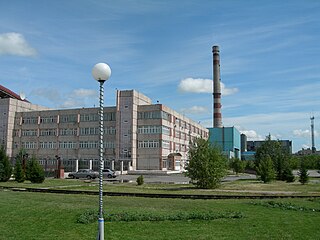
Beryozovskaya GRES is a coal-fired power plant near the town of Sharypovo in Krasnoyarsk Krai, Russia. The power plant is owned by Unipro. The installed capacity of the plant is 1,600 megawatts (2,100,000 hp).
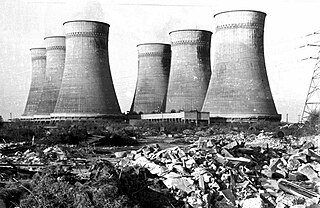
The Croydon power stations refers to a pair of demolished coal-fired power stations and to a gas-fired power station in the Purley Way area of Croydon, London.
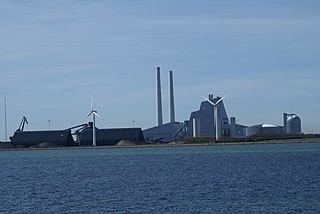
The Avedøre Power Station is a combined heat and power station, located in Avedøre, Denmark, just south of Copenhagen, and is owned by Ørsted A/S. Avedøre Power Plant is a high-technology facility and one of the world's most efficient of its kind, being able to utilize as much as 94% of the energy in the fuel and convert 49% of the fuel energy into electricity. Apart from using petroleum (oil) and natural gas, the plant runs on a wide variety of biomass fuels such as straw and wood pellets. The plant consists of two units with a total capacity of 793 MW of electricity and 918 MW of heat. The combination of producing electricity and heat for district heating at the same time is widely used in Denmark and the rest of Scandinavia, due to the need of domestic heating together with the Danish energy companies putting a big effort into optimising the energy plants.

Amyntaio Power Station is a 600 MW coal-fired power station near Amyntaio in Western Macedonia, Greece. Build and commissioned in the mid 1980s, the power station is fuelled by lignite from the adjacent Amyntaio coal mine.
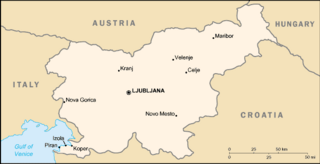
Total primary energy supply (TPES) in Slovenia was 6.80 Mtoe in 2019. In the same year, electricity production was 16.1 TWh, consumption was 14.9 TWh.
Denmark is a leading country in renewable energy production and usage. Renewable energy sources collectively produced 75% of Denmark's electricity generation in 2022, and are expected to provide 100% of national electric power production from 2030. Including energy use in the heating/cooling and transport sectors, Denmark is expected to reach 100% renewable energy in 2050, up from the 34% recorded in 2021.
Blackburn power stations are a series of electricity generating stations that have provided electric power to the town of Blackburn and the wider area from 1895 to the present. The first station in Jubilee Street, Blackburn began operating in 1895. A new larger station known as Blackburn East or Whitebirk power station was commissioned in 1921 and was rebuilt in stages over the period 1942 to 1955. Whitebirk station closed in 1976. The 60 MW Blackburn Mill Combined Cycle Gas Turbine (CCGT) power station has generated electricity since 2002. The Blackburn energy from waste (EfW) plant is currently (2020) being planned.
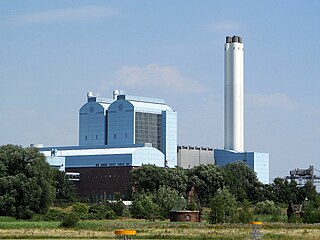
Tiefstack Power Station is a coal-fired power station and combined cycle power plant, located in the Tiefstack lowland, Hamburg-Billbrook suburb, of Hamburg The power station generates electricity that is fed into the municipal grid as well as thermal energy for the local long-distance heating system.

The Vaskiluoto power stations complex situated on the Gulf of Bothnia island of Vaskiluoto in Vaasa, Finland, comprises three separate power stations connected to the Finnish national grid, Fingrid.